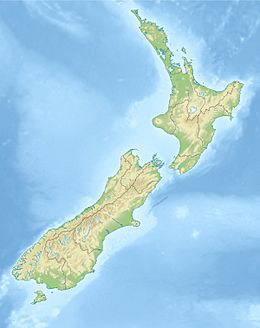French Pass facts for kids
French Pass (officially Te Aumiti / French Pass) is a very narrow and challenging waterway in New Zealand. It separates D'Urville Island from the main South Island. On one side is Tasman Bay, and on the other, Pelorus Sound / Te Hoiere leads out to Cook Strait.
This pass is famous for having the fastest tidal flows in New Zealand. The water can rush through at speeds up to 8 knots (about 4 m/s). When the tide changes, the current becomes so strong it can even stun fish!
The local Māori tribes in this area are Ngāti Koata and Ngāti Kuia.
Contents
The Story of French Pass
Māori Legends and Kupe
In the old stories of some Māori tribes, Te Aumiti (French Pass) is a special resting place. It is where Kupe's pet king shag, named Te Kawau-a-Toru, is said to rest. Kupe was a brave Polynesian explorer. He was the first to discover Cook Strait in his canoe.
During his journey, Kupe fought a giant octopus. This fierce battle carved out the many shapes of the Sounds we see today. Kupe's loyal shag then guided him to the French Pass. The shag explored the area for Kupe. Te Kawau-a-Toru was a sacred bird with a huge wingspan. It was believed to have "the eye of the ancestor," meaning it held ancient knowledge.
However, while testing the channel for Kupe's canoe, Te Kawau-a-Toru got caught in the strong tidal currents. It broke a wing and drowned. The broken reef next to the channel is believed to be Kupe's loyal bird turned to stone. It is called Te Aumiti a te Kawau-a-Toru, meaning "the currents that swallowed Toru's shag." A nearby rocky point, where the lighthouse now stands, is thought to be the bird's petrified bones.
European Discovery and the Astrolabe
The first time Europeans sailed through the pass was in 1827. Admiral Jules Dumont d'Urville was a French Navy officer. He navigated the pass during his second trip to New Zealand. He was sailing in his ship, the Astrolabe.
As the ship entered the narrowest part of the pass, it swung sideways. The crew could not steer it. The Astrolabe hit rocks twice. Then, the strong current washed it over the reef and into Admiralty Bay. D'Urville later said that no one should try to sail through French Pass unless it was an extreme emergency. This shows how powerful and tricky the currents are there.
Pelorus Jack, the Friendly Dolphin
In 1888, a special Risso's dolphin appeared in the area. For the next 24 years, this dolphin would swim alongside boats going to and from French Pass. He became very famous as Pelorus Jack. He was the first dolphin in the world to be protected by law.
Pelorus Jack stayed mainly in the Pelorus Sounds. He did not usually go through the pass into Tasman Bay. He would meet boats as they came out of the pass. He would ride their bow waves for about 8 kilometers (5 miles) into Pelorus Sound. Then, he would join boats returning to Nelson and escort them back to the pass. Pelorus Jack was last seen in April 1912.
Official Name Change
In August 2014, the name of French Pass was officially changed. It is now known as Te Aumiti / French Pass. This change recognizes both its Māori and European history.
Understanding the Tidal Flows
The French Pass is about 500 meters (1,640 feet) wide. However, the main channel for boats, called the "throat" or "narrows," shrinks to only about 100 meters (328 feet). This part also has a shallow area about 20 meters (66 feet) deep. Most of the rest of the pass is made up of broken reefs.
On one side of the pass, Cook Strait has a tidal range (the difference between high and low tide) of up to 2 meters (6.6 feet). On the other side, Tasman Bay has a tidal range of up to 4 meters (13 feet). This big difference in water levels creates strong pressure across the pass. Also, the high tides on each side happen about 25 minutes apart. This adds to the complexity of the currents. The water can flow through the narrow throat at speeds of about 4 meters per second (9 miles per hour).
Near the pass, there are deep holes in the seabed. Very strong vertical currents can happen here. These currents can create powerful whirlpools. It is very important to be careful when boating or diving near the pass because of these strong and unpredictable water movements.
French Pass / Anaru Settlement
French Pass / Anaru is an unofficial name for the small settlement located south of French Pass. This name has been used since at least 1980. Before that, it was simply called Anaru.
In the settlement, you can find a short walking track. This path leads to a lookout point that offers great views of the channel. There is also a campground, a boat ramp, and a jetty for boats. The road to French Pass / Anaru is about 70 kilometers (43 miles) from SH6. Much of this road is unsealed and has sharp bends, so it's a scenic but winding drive.
See also
 In Spanish: Paso Francés (Nueva Zelanda) para niños
In Spanish: Paso Francés (Nueva Zelanda) para niños


